Europe Microbial Food Culture Market Size
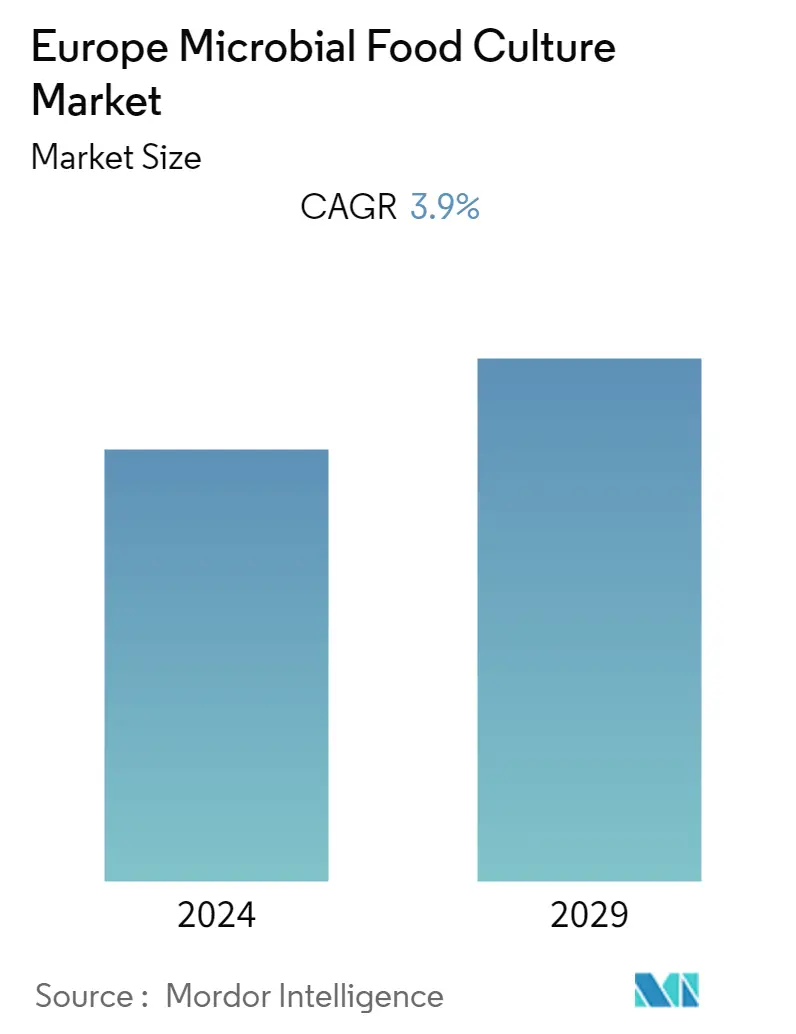
| Study Period | 2019 - 2029 |
| Base Year For Estimation | 2023 |
| Forecast Data Period | 2024 - 2029 |
| Historical Data Period | 2019 - 2022 |
| CAGR | 3.90 % |
| Market Concentration | Low |
Major Players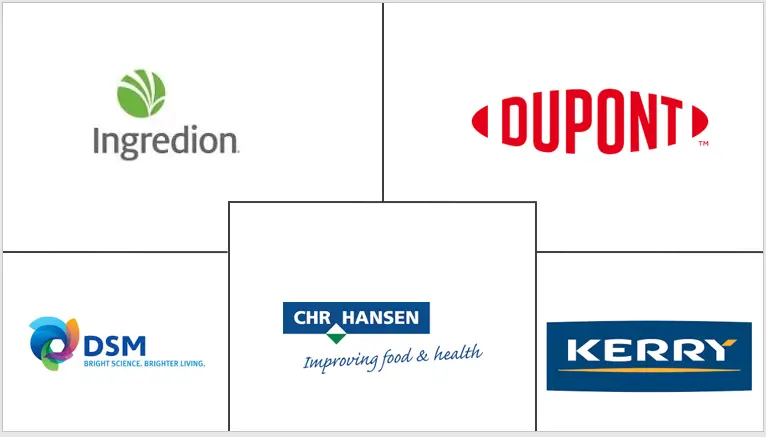
*Disclaimer: Major Players sorted in no particular order |
Europe Microbial Food Culture Market Analysis
Europe Microbial Food Culture Market is projected to grow at a CAGR of 3.9% during the forecast period 2020-2025.
- The microbial culture market is witnessing growth with the increasing demand for probiotic and fermented food and beverages, such as kefir, kombucha, and kvass, and the food and beverage manufacturers seeking innovative ingredients to enhance the shelf life of their products to meet the changing consumer needs
- Microbial culture is also gaining attraction from the manufacturers due to the growing acceptance of the bio-preservation concept. Bio-preservation is an attractive alternative to chemical and physical preservation. Food fermentations offer excellent models for studying the basic principles and mechanisms of bio-preservation, and traditional fermentations may be valuable resources of new strains for bio-preservation.
Europe Microbial Food Culture Market Trends
This section covers the major market trends shaping the Europe Microbial Food Culture Market according to our research experts:
Wider Application from Core Industries
The food processing sector is growing with the presence of various new fermented offerings owing to the increasing customer demand for product differentiations and the added benefits of extended shelf life. Low alcohol beer is thriving in Europe and a shift toward low alcohol options is building momentum in the United States as well; consumers are clearly showing a more pro-active adoption of healthier drinking habits and with it a desire to consume delicious alternatives to alcohol. Thus players are introducing cultures specific for low alcohol beer. For example, Chr. Hansen has introduced NEER™ yeast. The factor behind the concept is that this unique strain, which was found in wine and beer through the ages but was previously unnoticed, consumes only a small part of the sugar but still finds a way to produce high levels of esters, which define that great beer flavor. Instead of removing alcohol, this new technology produces just the right amounts of alcohol and esters.
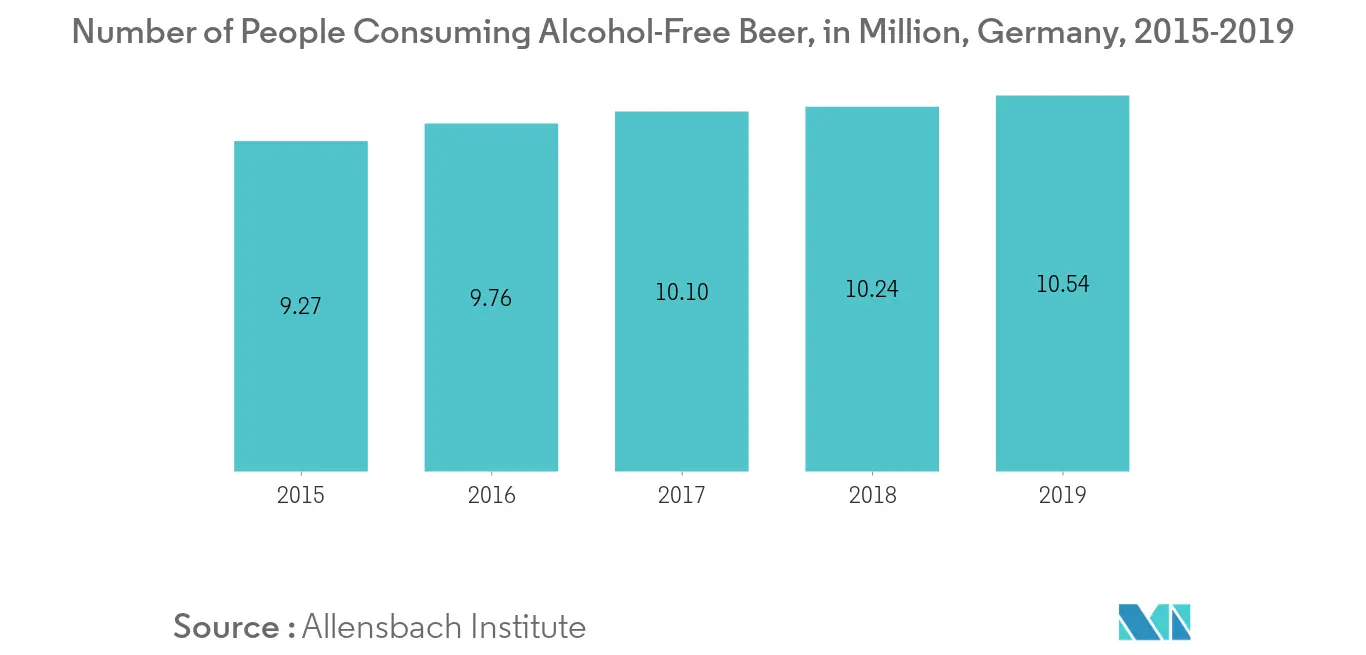
Germany Forms a Significant Market
Germany holds a prominent share of the European microbial culture market, owing to the presence of the matured food processing sector. Distinctive microbial cultures aid high organic growth of products, especially in dairy products. Chr. Hansen in 2017, launched more than 1000 dairy products made of microbial cultures to produce sustainable products. The online retailing of the cultures has also triggered the market in the country. DSMZ, a Leibniz institute, offers over 70,000 bioresources, including microbial culture for researchers from academia and industry.
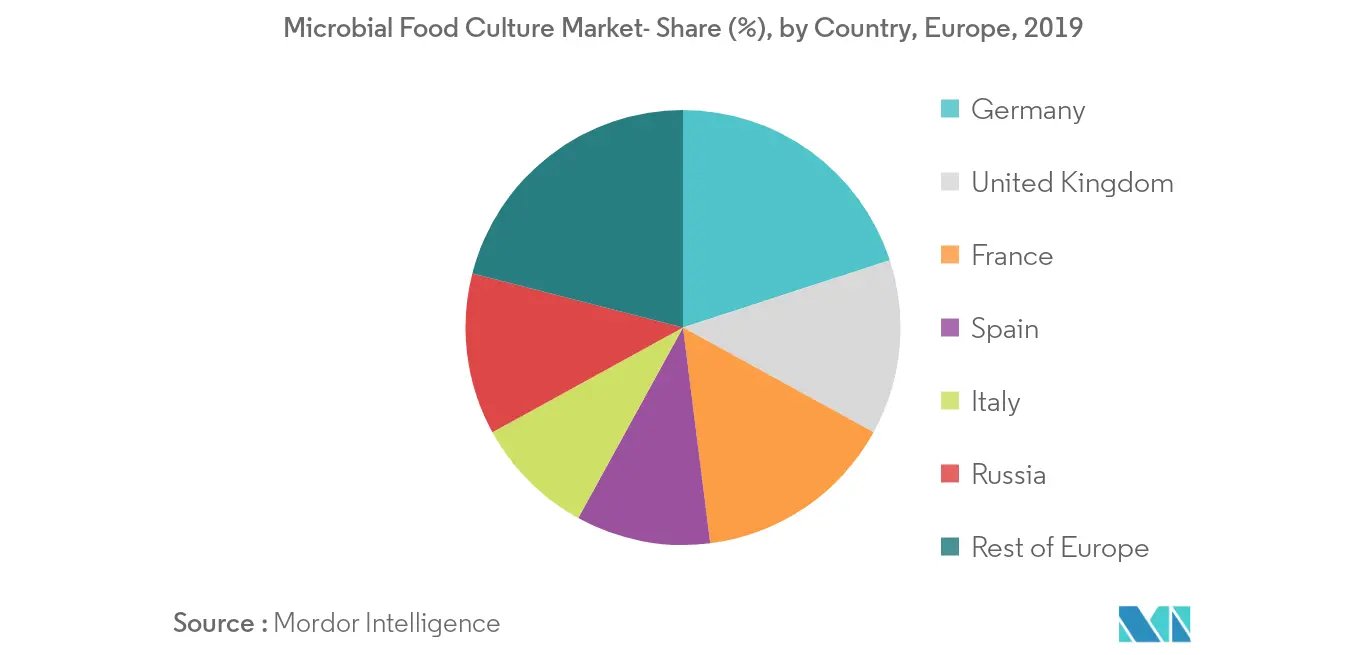
Europe Microbial Food Culture Industry Overview
Europe microbial food culture market is highly competitive and is dominated by several local and international players which leads to a fragmented and unorganized market at the global level. Major players in the market include Chr. Hansen A/S, DuPont, Koninklijke DSM N.V., and Kerry Group among others. Major players are focusing on product innovation in the market to expand their presence, to enhance their brand portfolio, and to cater to various preferences of product manufacturers.
Europe Microbial Food Culture Market Leaders
-
Kerry Group
-
Chr. Hansen
-
DuPont De Numors Inc.
-
Koninklijke DSM NV
*Disclaimer: Major Players sorted in no particular order
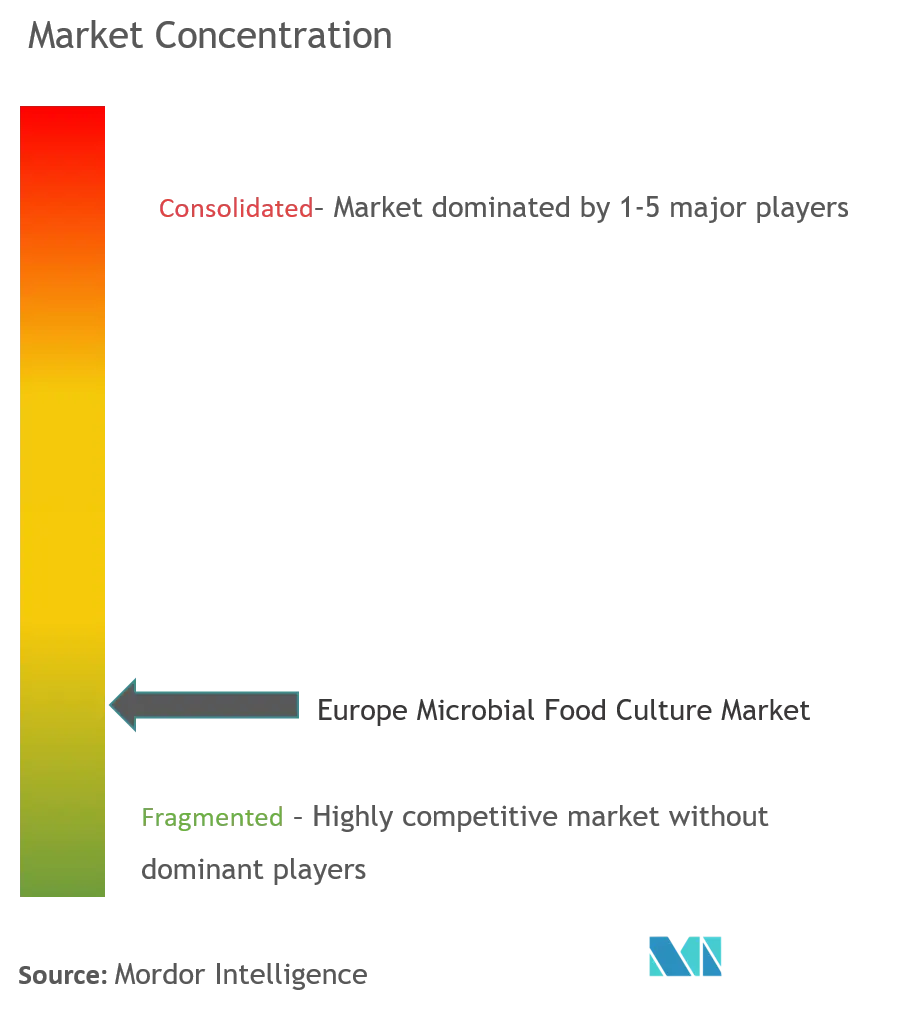
Europe Microbial Food Culture Market Report - Table of Contents
1. INTRODUCTION
- 1.1 Study Deliverables
- 1.2 Study Assumptions
- 1.3 Scope of the Study
2. RESEARCH METHODOLOGY
3. EXECUTIVE SUMMARY
4. MARKET DYNAMICS
- 4.1 Market Drivers
- 4.2 Market Restraints
-
4.3 Porter's Five Forces Analysis
- 4.3.1 Threat of New Entrants
- 4.3.2 Bargaining Power of Buyers/Consumers
- 4.3.3 Bargaining Power of Suppliers
- 4.3.4 Threat of Substitute Products
- 4.3.5 Intensity of Competitive Rivalry
5. MARKET SEGMENTATION
-
5.1 By Product Type
- 5.1.1 Starter Cultures
- 5.1.2 Adjunct and Aroma Cultures
- 5.1.3 Probiotics
-
5.2 By End-user Industry
- 5.2.1 Bakery and Confectionery
- 5.2.2 Dairy
- 5.2.3 Fruits and Vegetables
- 5.2.4 Beverages
- 5.2.5 Other End-user Industries
-
5.3 By Geography
- 5.3.1 Germany
- 5.3.2 United Kingdom
- 5.3.3 France
- 5.3.4 Spain
- 5.3.5 Italy
- 5.3.6 Russia
- 5.3.7 Rest of Europe
6. COMPETITIVE LANDSCAPE
- 6.1 Most Active Companies
- 6.2 Most Adopted Strategies
- 6.3 Market Share Analysis
-
6.4 Company Profiles
- 6.4.1 Chr. Hansen
- 6.4.2 DuPont De Numors Inc.
- 6.4.3 Koninklijke DSM NV
- 6.4.4 Mediterranea Biotecnologie SRL
- 6.4.5 Ingredion Incorporated
- 6.4.6 Kerry Group
- 6.4.7 Givaudan SA (Naturex)
- 6.4.8 Dalton Biotecnologie
- 6.4.9 NCIMB
- *List Not Exhaustive
7. MARKET OPPORTUNITIES AND FUTURE TRENDS
** Subject To AvailablityEurope Microbial Food Culture Industry Segmentation
Europe Microbial Food Culture Market is segmented by product type, end-user industry, and geography. Based on product type, the market is segmented into Starter Cultures, Adjunct and Aroma Cultures, Probiotics. On the basis of the end-user industry, the market is segmented into Bakery and Confectionery, Dairy, Fruits and Vegetables, Beverages, Other End-user Industries,. Based on geography, the report provides a detailed regional analysis, which includes Germany, France, Italy, Spain, United Kingdom, Russia, rest of Europe.
| By Product Type | Starter Cultures |
| Adjunct and Aroma Cultures | |
| Probiotics | |
| By End-user Industry | Bakery and Confectionery |
| Dairy | |
| Fruits and Vegetables | |
| Beverages | |
| Other End-user Industries | |
| By Geography | Germany |
| United Kingdom | |
| France | |
| Spain | |
| Italy | |
| Russia | |
| Rest of Europe |
Europe Microbial Food Culture Market Research FAQs
What is the current Europe Microbial Food Culture Market size?
The Europe Microbial Food Culture Market is projected to register a CAGR of 3.9% during the forecast period (2024-2029)
Who are the key players in Europe Microbial Food Culture Market?
Kerry Group, Chr. Hansen, DuPont De Numors Inc. and Koninklijke DSM NV are the major companies operating in the Europe Microbial Food Culture Market.
What years does this Europe Microbial Food Culture Market cover?
The report covers the Europe Microbial Food Culture Market historical market size for years: 2019, 2020, 2021, 2022 and 2023. The report also forecasts the Europe Microbial Food Culture Market size for years: 2024, 2025, 2026, 2027, 2028 and 2029.
Europe Microbial Food Culture Industry Report
Statistics for the 2024 Europe Microbial Food Culture market share, size and revenue growth rate, created by Mordor Intelligence™ Industry Reports. Europe Microbial Food Culture analysis includes a market forecast outlook to 2029 and historical overview. Get a sample of this industry analysis as a free report PDF download.



